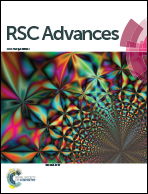Fabrication of c-Si solar cells using boric acid as a spin-on dopant for back surface field
Abstract
Cost effective solar cells are paramount for solar power to compete with traditional power generation. Here we present results on two low cost, both side textured c-Si solar cells. One solar cell had an Al back surface field (BSF), while the other had boron BSF fabricated by using spin-on boric acid as a p-type dopant. As compared to the Al-BSF solar cell, an improvement in efficiency of 1.7% was observed for a solar cell with boron BSF. Since boron BSF is stronger than Al-BSF, an improvement in efficiency can be attributed to an increase in long wavelength response, collection efficiency and reduced back surface recombination. The boron BSF solar cell showed an efficiency of 12.9% with Voc of 0.56 V, Jsc of 32.2 mA cm−2 and FF of 0.72. These parameters are expected to significantly increase further with the addition of layers such as anti-reflection/passivation layers at the front side, and back surface passivation with local back surface field, etc.


 Please wait while we load your content...
Please wait while we load your content...